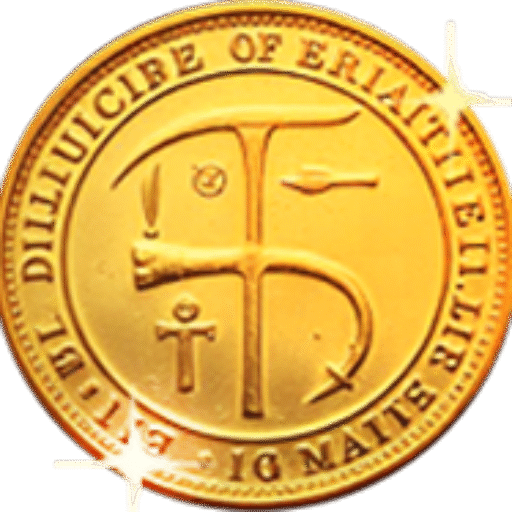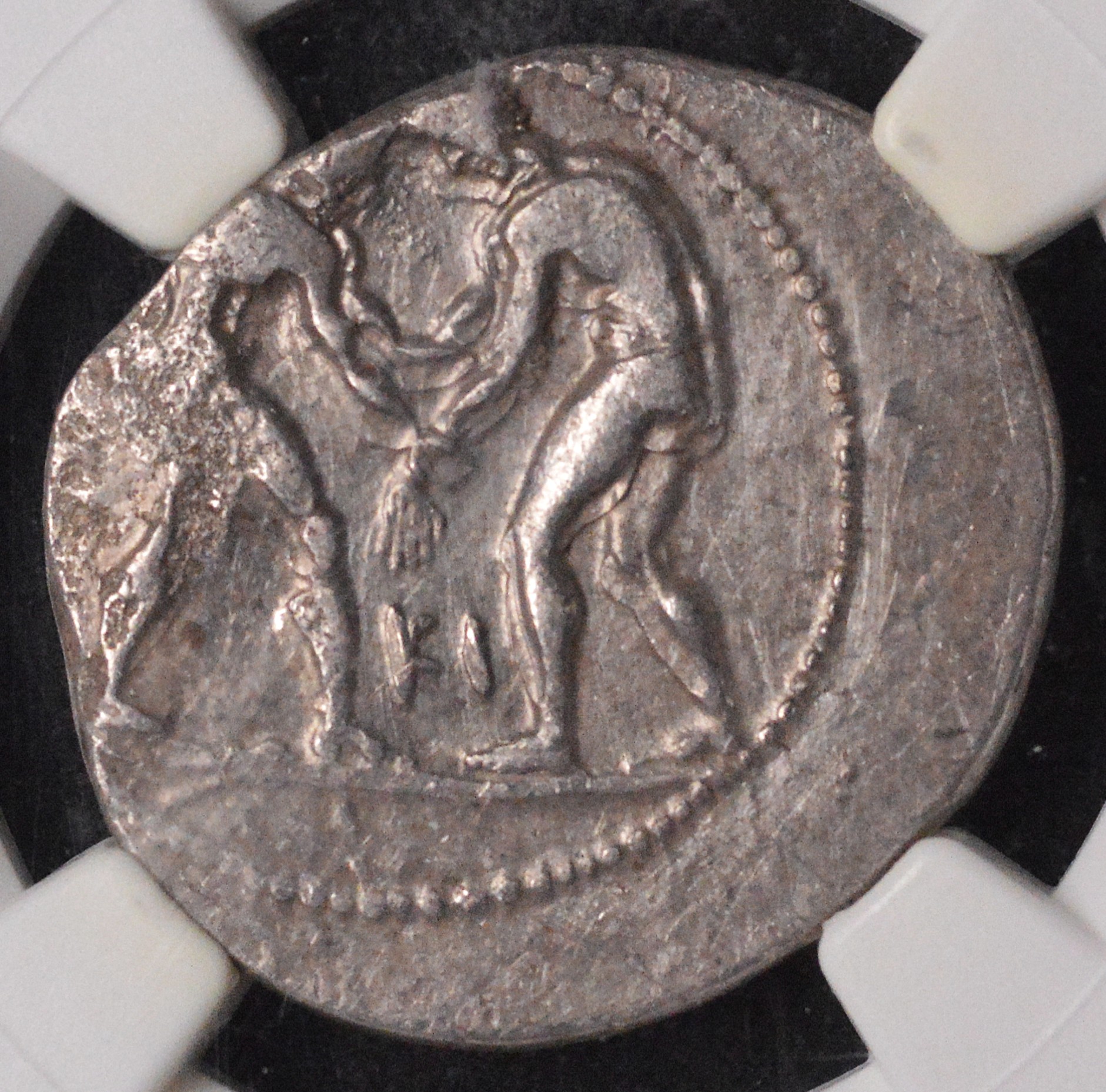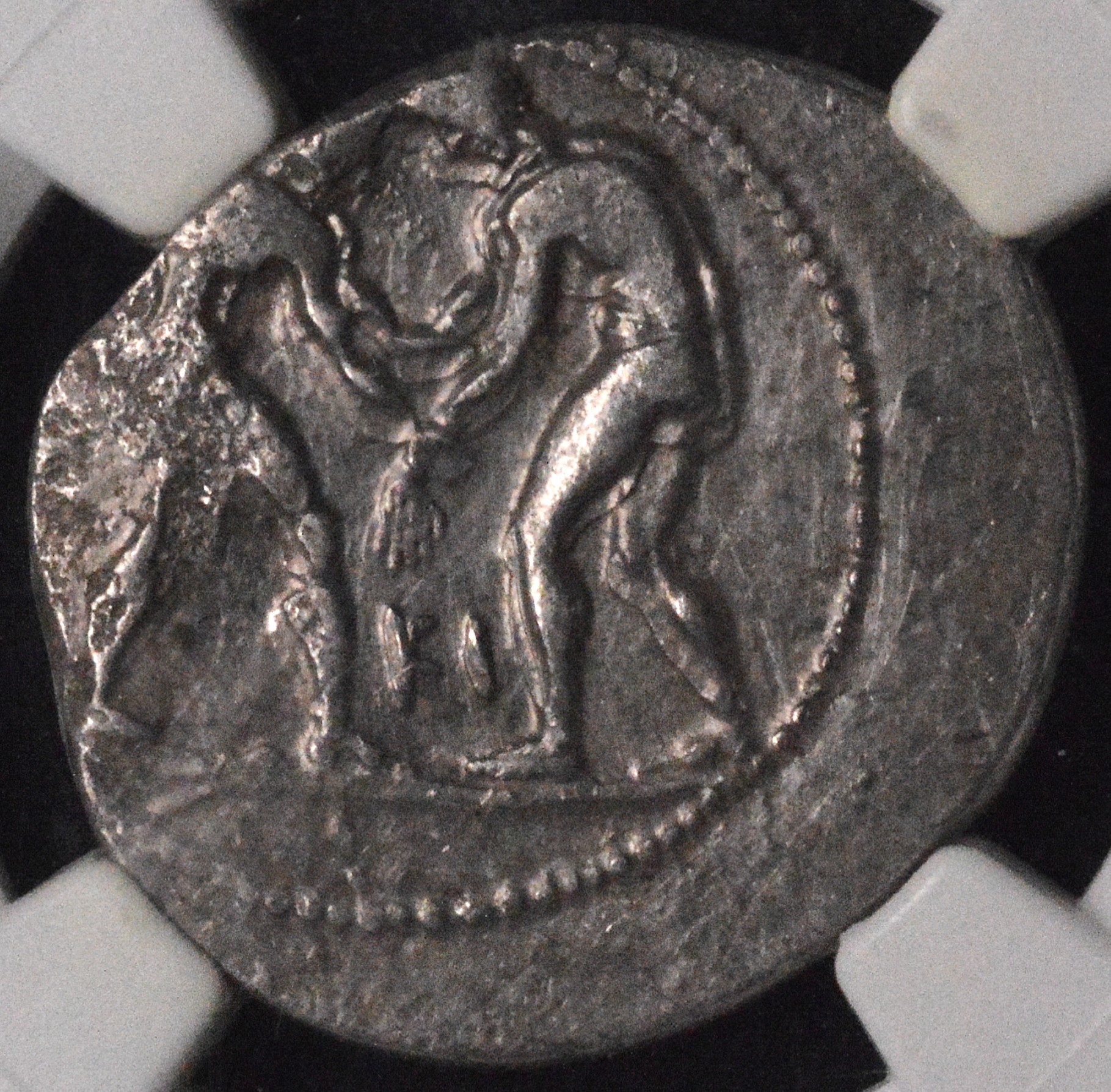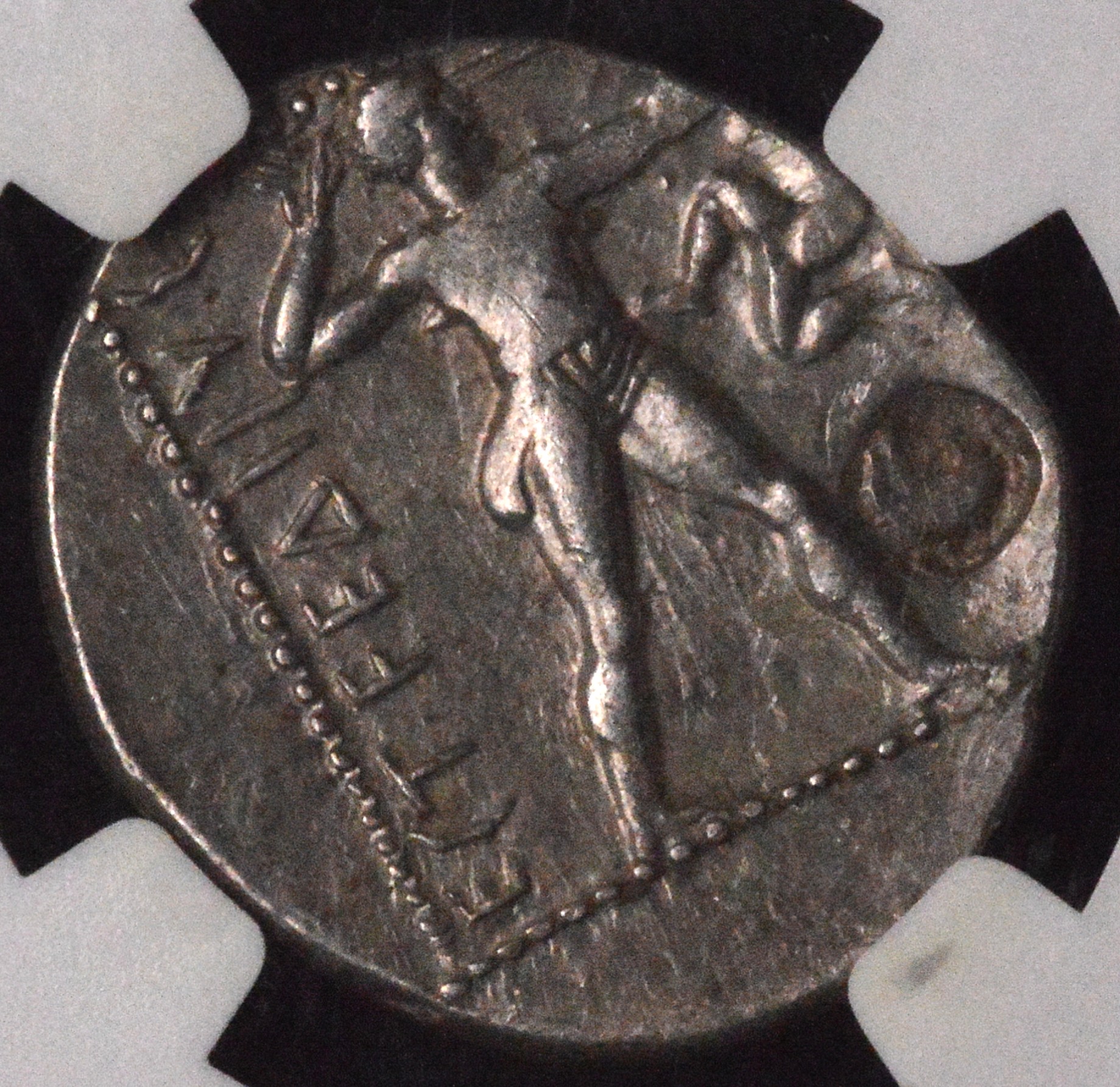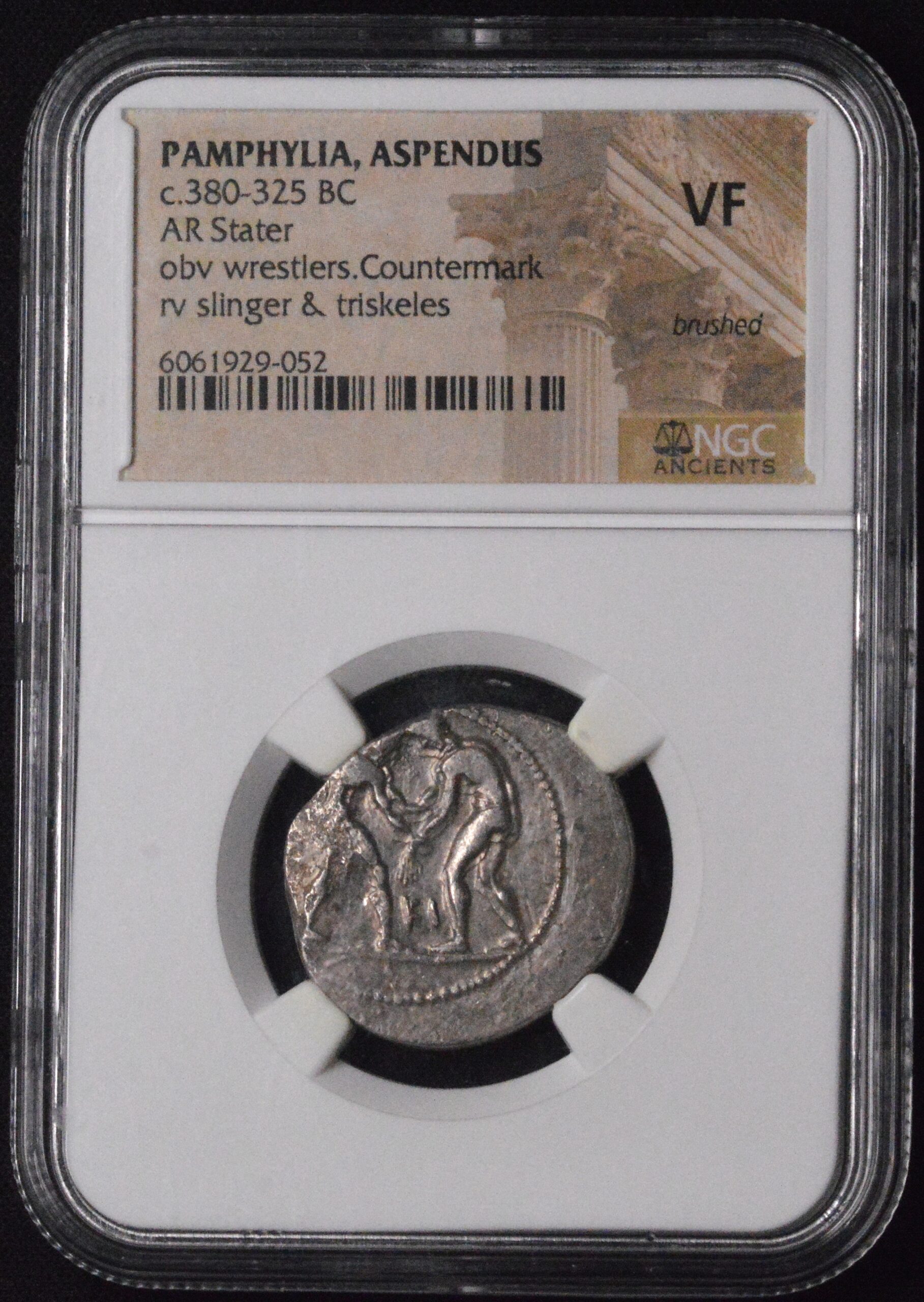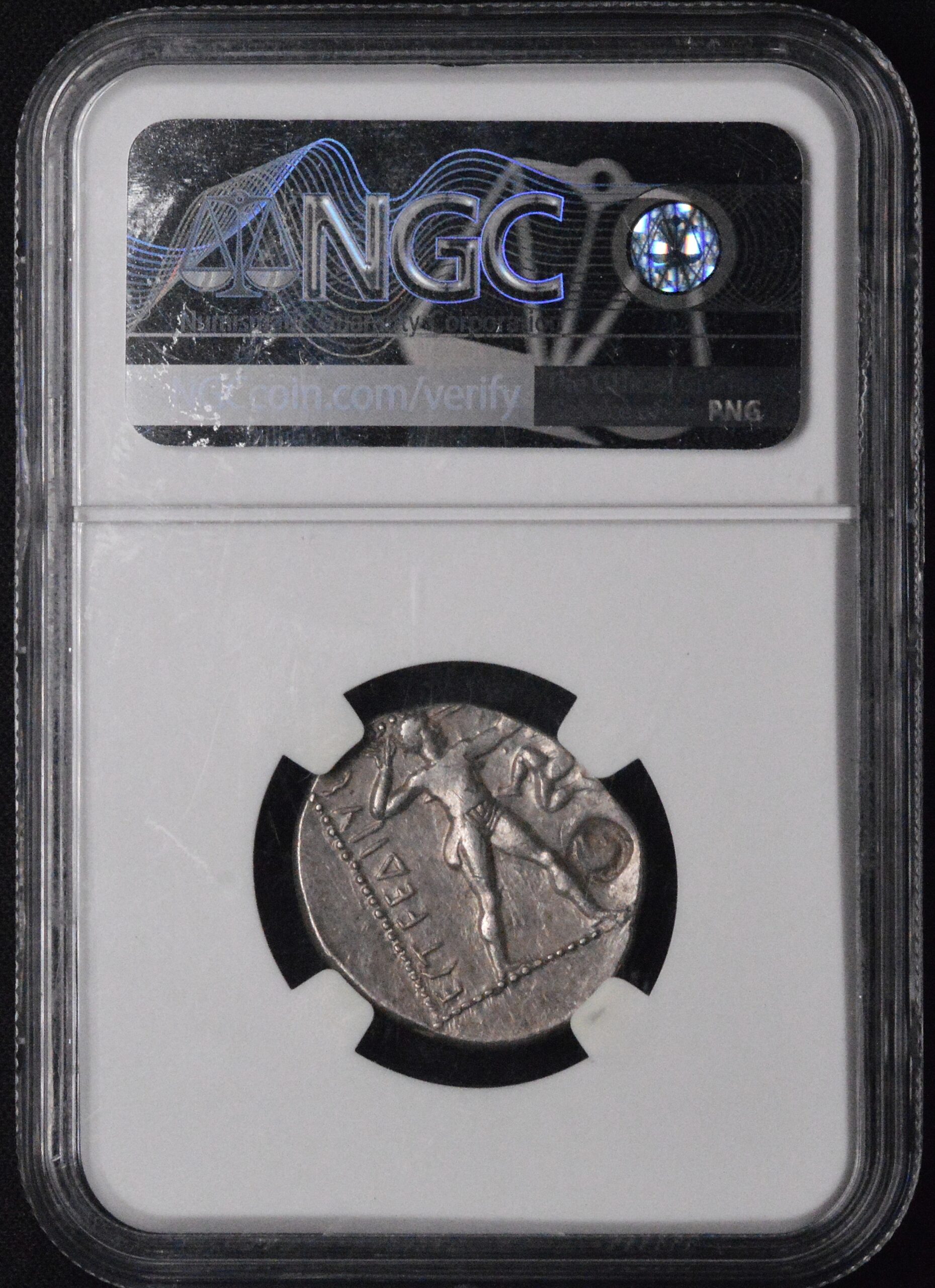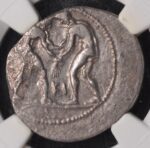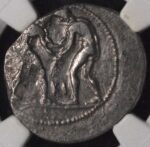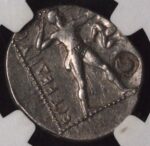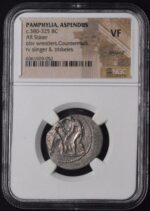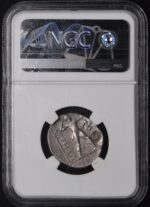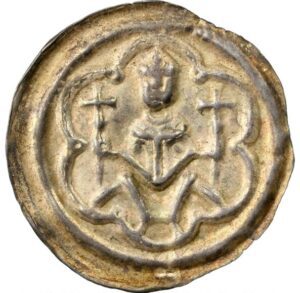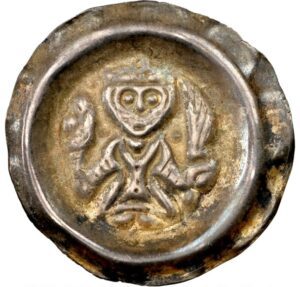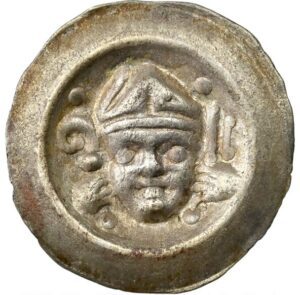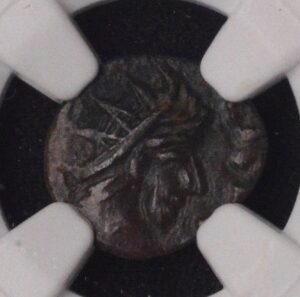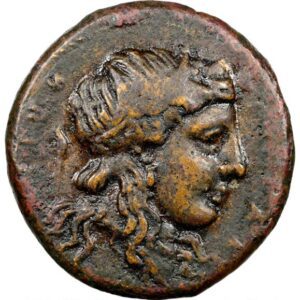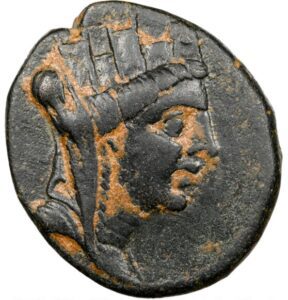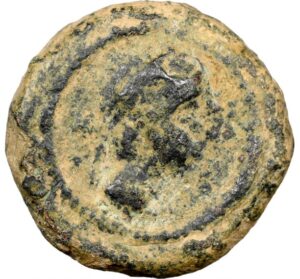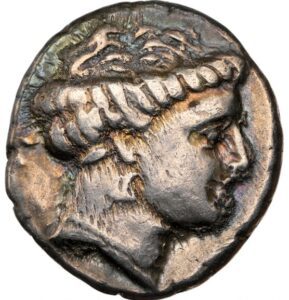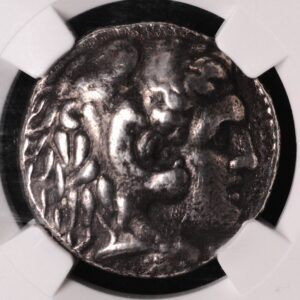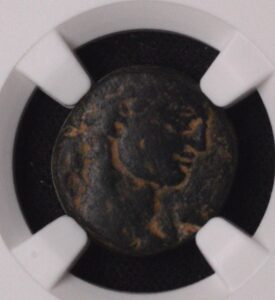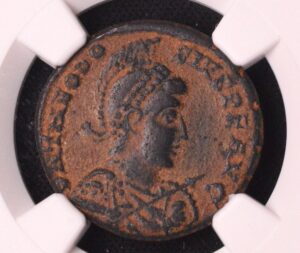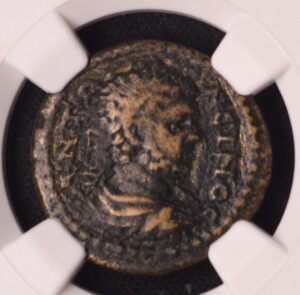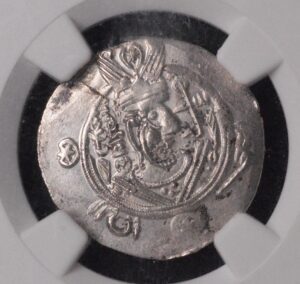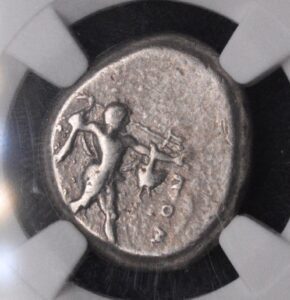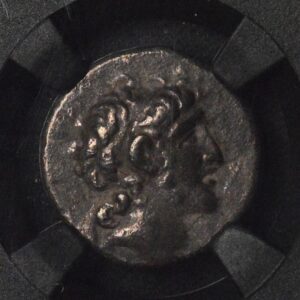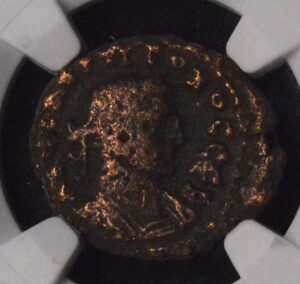Description
The Pamphylia Aspendus AR Stater, dated circa 380–325 B.C., is one of the most iconic silver coins of ancient Greece, struck in the prosperous city of Aspendus in southern Anatolia (modern-day Turkey). This coin reflects both athletic prowess and military strength—two cornerstones of classical Greek identity.
The obverse depicts two nude wrestlers grappling, symbolizing the athletic competitions central to Greek culture, possibly referencing the games held in honor of local deities. Greek inscriptions or monograms, often letters such as ΑΦ or KI, appear between the wrestlers, identifying die engravers or magistrates. The reverse shows a slinger in mid-throw, his stance dynamic and coiled with energy, accompanied by a triskeles (three human legs in rotation) — a regional emblem symbolizing motion and harmony. The inscription ΕΣΤΦΕΔΙΙΥΣ (EΣTFEΔIIYΣ) identifies the issuing city, Aspendus.
Each stater measures about 22–24 millimeters in diameter and weighs approximately 10.8 to 11 grams, struck from fine silver (.950+ purity). The artistry of the dies highlights the realism and anatomical precision that characterized late Classical Greek engraving. Coins from this mint circulated widely across the Mediterranean, attesting to Aspendus’ prominence in trade and its reputation for economic and military stability.
An example graded NGC Choice VF (Very Fine) indicates sharp design elements and strong legibility despite wear consistent with circulation. Major features—like the wrestlers’ limbs, slinger’s posture, and triskeles—remain clearly visible, offering an authentic reflection of Greek craftsmanship around the 4th century B.C..
This stater represents more than a medium of exchange—it embodies the spirit of Greek athleticism and the technical brilliance of ancient minting. The Aspendus coinage stands among the most celebrated examples of Classical numismatic art, uniting symbolic depth, artistic expression, and historical significance in silver form.
The Pamphylia Aspendus AR Stater, dated circa 380–325 B.C., is one of the most iconic silver coins of ancient Greece, struck in the prosperous city of Aspendus in southern Anatolia (modern-day Turkey). This coin reflects both athletic prowess and military strength—two cornerstones of classical Greek identity.
The obverse depicts two nude wrestlers grappling, symbolizing the athletic competitions central to Greek culture, possibly referencing the games held in honor of local deities. Greek inscriptions or monograms, often letters such as ΑΦ or KI, appear between the wrestlers, identifying die engravers or magistrates. The reverse shows a slinger in mid-throw, his stance dynamic and coiled with energy, accompanied by a triskeles (three human legs in rotation) — a regional emblem symbolizing motion and harmony. The inscription ΕΣΤΦΕΔΙΙΥΣ (EΣTFEΔIIYΣ) identifies the issuing city, Aspendus.
Each stater measures about 22–24 millimeters in diameter and weighs approximately 10.8 to 11 grams, struck from fine silver (.950+ purity). The artistry of the dies highlights the realism and anatomical precision that characterized late Classical Greek engraving. Coins from this mint circulated widely across the Mediterranean, attesting to Aspendus’ prominence in trade and its reputation for economic and military stability.
An example graded NGC Choice VF (Very Fine) indicates sharp design elements and strong legibility despite wear consistent with circulation. Major features—like the wrestlers’ limbs, slinger’s posture, and triskeles—remain clearly visible, offering an authentic reflection of Greek craftsmanship around the 4th century B.C..
This stater represents more than a medium of exchange—it embodies the spirit of Greek athleticism and the technical brilliance of ancient minting. The Aspendus coinage stands among the most celebrated examples of Classical numismatic art, uniting symbolic depth, artistic expression, and historical significance in silver form.
The Pamphylia Aspendus AR Stater, dated circa 380–325 B.C., is one of the most iconic silver coins of ancient Greece, struck in the prosperous city of Aspendus in southern Anatolia (modern-day Turkey). This coin reflects both athletic prowess and military strength—two cornerstones of classical Greek identity.
The obverse depicts two nude wrestlers grappling, symbolizing the athletic competitions central to Greek culture, possibly referencing the games held in honor of local deities. Greek inscriptions or monograms, often letters such as ΑΦ or KI, appear between the wrestlers, identifying die engravers or magistrates. The reverse shows a slinger in mid-throw, his stance dynamic and coiled with energy, accompanied by a triskeles (three human legs in rotation) — a regional emblem symbolizing motion and harmony. The inscription ΕΣΤΦΕΔΙΙΥΣ (EΣTFEΔIIYΣ) identifies the issuing city, Aspendus.
Each stater measures about 22–24 millimeters in diameter and weighs approximately 10.8 to 11 grams, struck from fine silver (.950+ purity). The artistry of the dies highlights the realism and anatomical precision that characterized late Classical Greek engraving. Coins from this mint circulated widely across the Mediterranean, attesting to Aspendus’ prominence in trade and its reputation for economic and military stability.
An example graded NGC Choice VF (Very Fine) indicates sharp design elements and strong legibility despite wear consistent with circulation. Major features—like the wrestlers’ limbs, slinger’s posture, and triskeles—remain clearly visible, offering an authentic reflection of Greek craftsmanship around the 4th century B.C..
This stater represents more than a medium of exchange—it embodies the spirit of Greek athleticism and the technical brilliance of ancient minting. The Aspendus coinage stands among the most celebrated examples of Classical numismatic art, uniting symbolic depth, artistic expression, and historical significance in silver form.
CUSTOMER FEEDBACK








Related Products & Newly Released!
-
$400.00




SHIPPING POLICY
Your order is shipped from the United States with USPS tracking within one business day.
14 Day Return Policy
You can return your item back within
14 days of the purchase

Secure payments
Your payments are 100% secure and are processed through Square or PayPal on a protected security network.
SHIPPING POLICY
FREE International and Domestic (United States) shipping. Your order is shipped with USPS tracking 24 hours after you order.
14 Day Return Policy
You can return your item back within
14 days of the purchase

Secure payments
Your payments are 100% secure and are processed through Square or PayPal on a protected security network.
RESOURCES
support
Get Fresh Articles!
Sign up now to receive our articles for the latest insights and promotions!
RESOURCES
support
Get Fresh Articles!
Signup our newsletter to get update insight or promotions.

